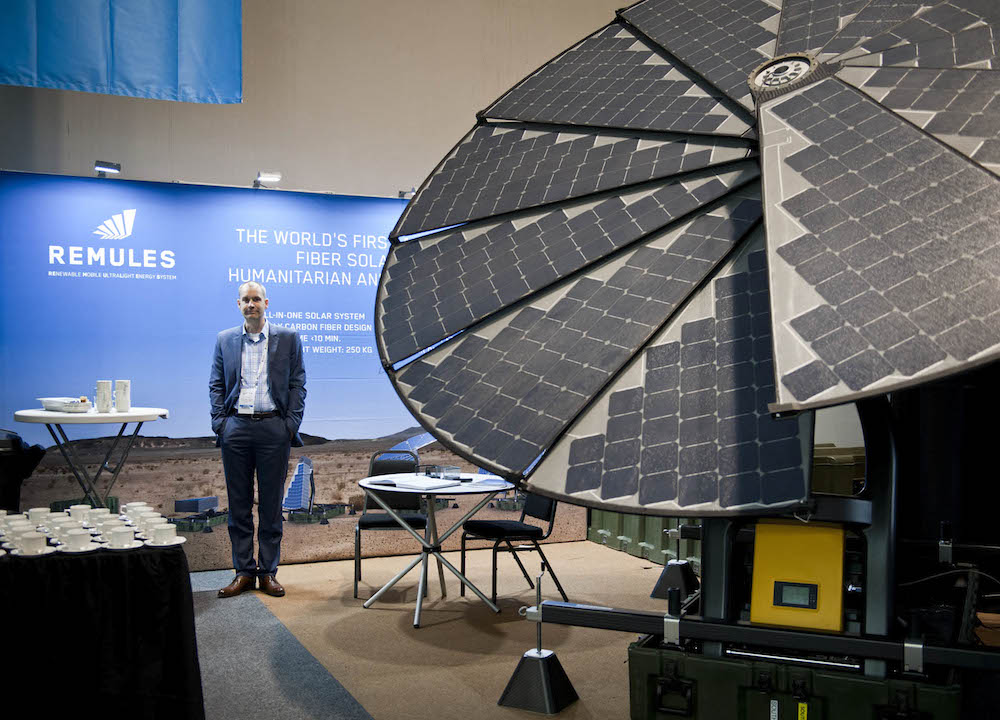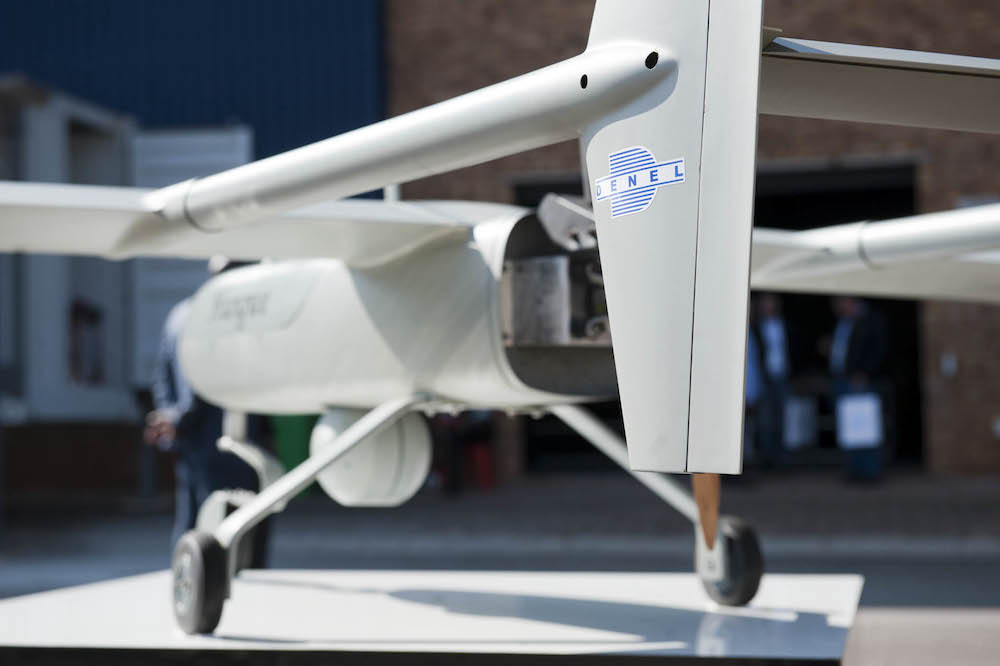In arm's way: Hans Kriek
You don’t need to be a gifted amateur sociologist to realise that the hidden component of all arms fairs is sex. This is what makes them marginally less shallow than sex fairs themselves because, while sex fairs are straight up occasions – the phrase is used in its tumescent rather than literal sense – to parade dildos and lingerie, the arms fair stalks its subject from afar.
It pretends to be about defence and protection but it is really all about hardware and massive equipment, the arms industry’s perpetual rut and the eroticism of men in uniform.
It is also about not being there at all, for the wheels of the industry are increasingly lubricated by surveillance, the kinky realm of sanctioned voyeurism where drones can, as it were, burrow into the darkest places, the sex shop of the soul.
A closed bedroom door or “Do not disturb” sign used to suffice. This applies no longer. There is surely no bigger turn-on for the spies of this world than muscling into places where you haven’t been invited – especially in the interests of national security.
There are limitations to such an analysis, certainly. It was Sigmund Freud, after all, who gently reminded us that a revolver was sometimes simply a revolver and not a phallic object.
Then there’s the idea that military hard- or software can easily be adapted or customised for civilian use. The no-man’s-land between the two is increasingly blurred.
Take Sprung, a Canadian company based just outside of Calgary, that exhibited at the Land Forces Expo in Pretoria this week. Its hangars and halls – called “tensioned membrane structures” – have been used by the United States military in Afghanistan and Iraq but Sprung is also about to put up its first church in Lagos. “We started in 1887 and used to sell canvas tents to the cowboys and the Indians,” says Jonathon Fenton, of the parent company back in Canada, with the good-natured glint of the commercial pragmatist.
With stalls for local and overseas exhibitors, Land Forces contained every conceivable gadget and item of military hardware. There were scopes and sights for rifles, semi-automatic weapons and handguns. There were drones and armoured personnel carriers, field kitchens and hospitals. There was even a solar panel (or series of panels) patented by an Austrian company in the shape of a sunflower, the panels fanning out across a central point like petals.
“We first designed it for the civil market, to take care of the average energy needs of the Austrian household generating two kilowatts of power,” says Tobias Legerer of Remules. “Then we started to explore opportunities with the Red Cross and possibly the military. The energy is produced in the nicest possible way – we think it looks gorgeous.”

Tobias Legerer says Remules’ solar system was initially aimed at households. (Madelene Cronjé, M&G)
It was noticeable while walking through the exhibition that the overseas exhibitors products’ were often more aesthetically pleasing, the locals’ items more durable.
Peter How represents PJ Aviation, producer of rugged portable radios for ground-to-air communications here in South Africa. He’s been doing it for years and knows that African conditions can batter even the hardiest products.
“I’ve tried to take care of all of those problems by using an aluminium alloy for the casing,” he says. “Battery life is important in Africa – it must be recharged quickly – and I’ve told the guys in the factory that it needs to be tough enough to be used as a stepping stone to peer over a wall.”
Much the same is true of the Puma M26 and M36, vehicles designed for troop transportation. They can withstand small arms fire in mine-infested areas and are as heavy, durable and ugly as they sound.
With a South African superstructure on an Indian axle, the Puma gets the job done, so much so that about 100 of these beasts were recently ordered for UN peacekeeping missions in Mali via the US state department.
Hans Kriek, part of the Puma stall, bemoaned the pace of business, but told me of his soft spot for the M26 – the slightly lighter of the two models. “It’s quite manoeuvrable in restricted areas and because it is under 10 tonnes it will do less damage to the roads than heavier vehicles,” he says. “And they can use pontoons and makeshift bridges over spruits across Africa.”
Let’s not get too cute about the humanitarian upside of vehicles like the Puma, cosily efficient as it is.
In a stall close by were local representatives of French company Thales, that has designed everything from the avionics system in the C130 Hercules transport aircraft to a railway ticketing system for the Passenger Rail Agency of South Africa in the Western Cape. Thales was, of course, linked to South Africa’s controversial arms deal too.
It also provides the artillery engagement systems for the G5 and G6 cannons, artillery pieces that can catapult shells with startling degree of accuracy 40km or more. This is sensitive equipment maintained by equally sensitive software systems but is no less frightening for that.
As the gun barrel heats up through use, it expands, leading to inaccuracy. This means the original calculations of wind, temperature and humidity – all factored into a logarithm – need to be pinpoint.
Nowadays such accurate surveillance is provided by drones, two of Denel’s products at the exhibition. These planes are much loved in the popular imagination because, from 18?000 feet up, they can look down on poachers and hopefully prevent them from killing rhino.
They also have a far more sinister dimension, peering into the nooks and crannies of your life in a way which makes the phrase “civil liberties” look like an effete liberal fiction.

Dual: Drones and solar panels are examples of military hardware that can be used for civilians purposes. (Madelene Cronjé, M&G)
From the innocuous to the malign
Hennie Kieser specialises in mobile field kitchens, but also does a good line in Scorpions, Bateleurs and Skunks (more of that in a moment).
Fired by two diesel-guzzling burners, his mobile kitchens are certainly among his more benign products on show. They can feed about 300 at a sitting and have, believes Kieser, several advantages over their European competitors.
“Ours is unique because it has a massive frying plate – you don’t steam and you don’t need pots and pans,” he says. “You fry on a griddle on top of the unit and it means you can really improve on your volumes.
With orders from defence forces in Namibia, Botswana, Ghana and Oman, Kiesser has worked the military market exceptionally well but is now finding that there’s a prick of civilian interest.
“People are interested in the kitchens for big weddings and funerals in rural areas here,” he says. “It’s great because you’d have no problem in doing pap en sous for hundreds of guests. Our guys aren’t going to eat steamed food.”
Kieser’s field kitchens look both hardy and useful, but there are some slightly less benign strings to his bow.
He also specialises in long-range surveillance systems that consist of vehicles on which are mounted long-range cameras that serve a control room. These vehicles, called Scorpions, are backed up by drones that can locate and hover over a target some distance away.
Once these drones, called Bateleurs, have honed in on what they’re looking for, down swoop the Skunks.
A Skunk is basically a small helicopter with many blades, designed to frighten the bejesus out of any poacher or insurgent.
“The moment you have Skunks above you, if they tell you to give up, you will give up,” says Kieser with ill-disguised relish. – Luke Alfred